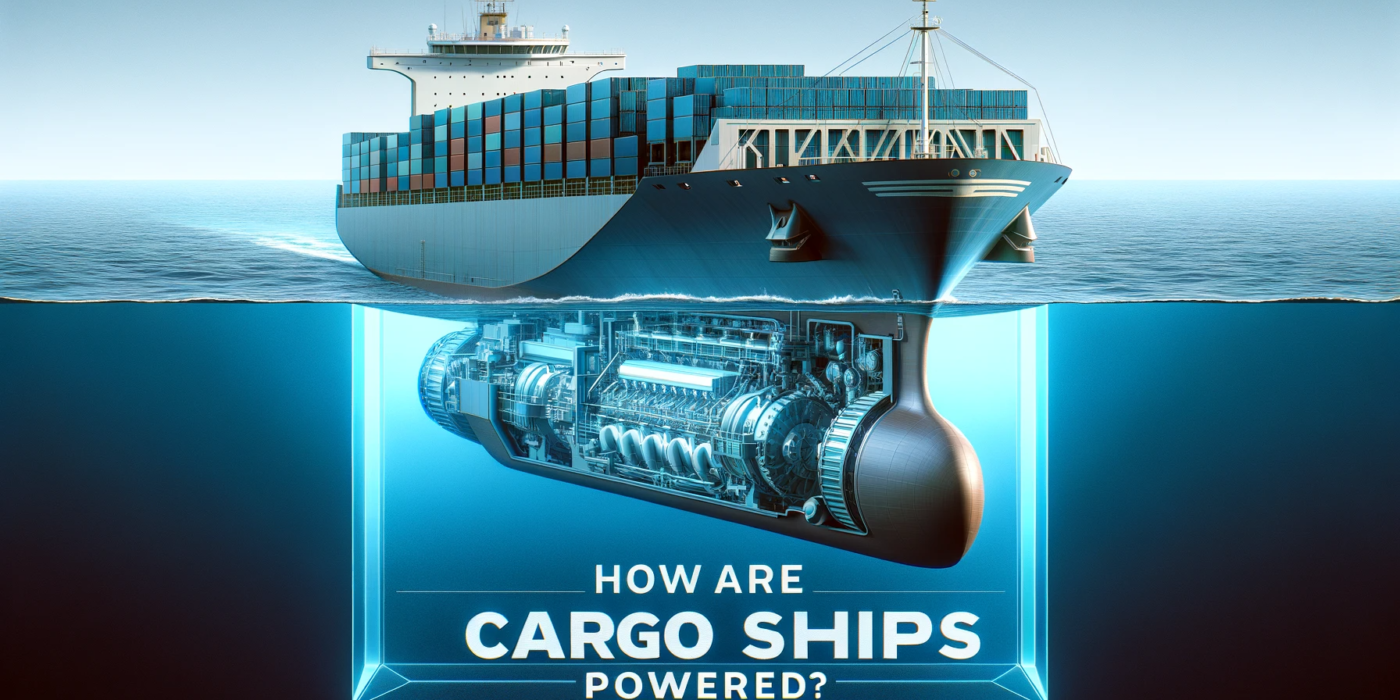Introduction
Navigating the vast expanses of the world’s oceans, cargo ships are the unsung heroes of global trade. Ever wondered how these colossal vessels power through the waves, transporting goods across the seas? In this comprehensive exploration, we delve into the intricacies of cargo ship propulsion systems, unraveling the mysteries that propel these giants of the maritime industry.
The Heart of the Matter: Engine Types
Internal Combustion Engines
At the core of most cargo ships lies the beating heart of internal combustion engines. These engines, predominantly powered by heavy fuel oil or diesel, convert the energy stored in the fuel into mechanical power. The colossal scale of cargo ships necessitates engines with immense power, often in the form of two-stroke or four-stroke engines.
Two-stroke engines are a common choice for large cargo vessels due to their superior power-to-weight ratio. They operate on a distinctive cycle, compressing air and fuel in one stroke and igniting it in the next, generating substantial power to drive the ship forward.
Four-stroke engines, although less common in cargo ships, are still employed in some cases. These engines undergo an intake, compression, power, and exhaust stroke, providing a more controlled and fuel-efficient combustion process.
Nuclear Power
In a select few instances, cargo ships harness the formidable power of nuclear propulsion. This cutting-edge technology involves utilizing a nuclear reactor to generate steam, propelling the ship through turbines. While not as prevalent as conventional internal combustion engines, nuclear-powered cargo ships boast extended range and reduced reliance on traditional fuel sources.
The Fuel Dilemma: Heavy Fuel Oil vs. LNG
Heavy Fuel Oil (HFO)
Traditionally, cargo ships have relied on heavy fuel oil (HFO) as their primary source of energy. This dense, viscous fuel provides the necessary power but raises concerns about environmental impact due to high sulfur content. As environmental regulations tighten, the maritime industry is exploring alternatives to mitigate these issues.
Liquid Natural Gas (LNG)
In response to environmental concerns, an increasing number of cargo ships are transitioning to liquefied natural gas (LNG). LNG is a cleaner-burning fuel that significantly reduces emissions, aligning with global efforts to achieve sustainable shipping practices. The transition to LNG also addresses the International Maritime Organization’s (IMO) regulations aimed at curbing sulfur emissions.
Harnessing Wind Power: A Modern Renaissance
Sails and Rotor Sails
While modern cargo ships primarily rely on engines, the industry is experiencing a resurgence of interest in harnessing wind power. Innovations like retractable sails and rotor sails are making a comeback, offering an eco-friendly and cost-effective alternative for certain vessels. These auxiliary propulsion systems capitalize on wind energy, reducing fuel consumption and environmental impact.
Future Perspectives: Emerging Technologies
Hydrogen Fuel Cells
As the world shifts towards cleaner energy sources, cargo ships are exploring the potential of hydrogen fuel cells. These cells generate electricity through the chemical reaction of hydrogen and oxygen, emitting only water vapor as a byproduct. Although still in the experimental phase, hydrogen fuel cells hold promise for revolutionizing the maritime industry’s environmental footprint.
Advanced Materials and Designs
Cutting-edge materials and streamlined ship designs are also playing a pivotal role in enhancing fuel efficiency and reducing emissions. From hull coatings that minimize friction to innovative propeller designs optimizing hydrodynamics, the future of cargo ship propulsion is intertwined with advancements in materials and engineering.
Conclusion
In the dynamic realm of cargo ship propulsion, a diverse array of technologies coexists, each contributing to the efficient and sustainable movement of goods across the seas. From the traditional reliance on internal combustion engines to the emerging frontiers of nuclear power, LNG, and wind-assisted propulsion, the maritime industry is navigating towards a greener and more innovative future.

